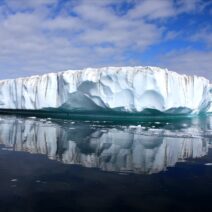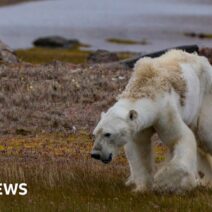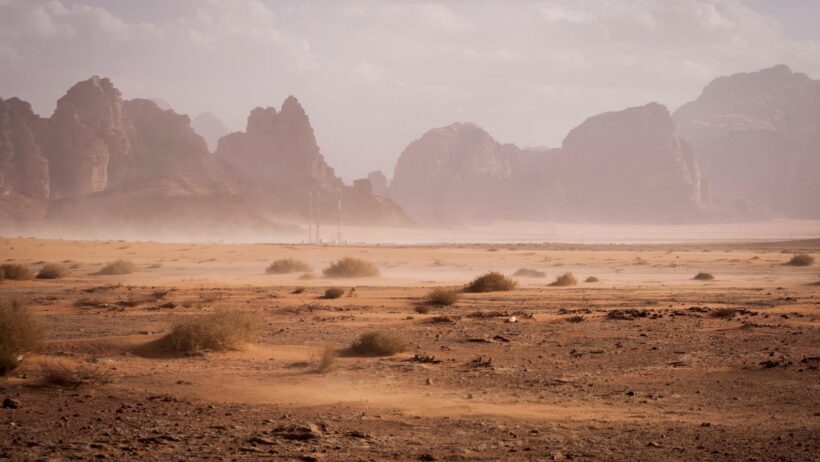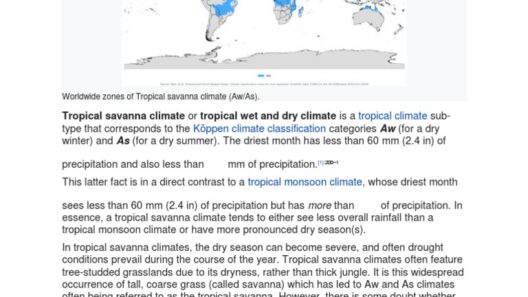Deserts, often characterized by their arid conditions and sparse vegetation, represent some of the most extreme environments on our planet. The climate in these regions is profoundly shaped by a combination of geographical, meteorological, and ecological factors. Understanding this climate is essential not only for appreciating the biodiversity that exists in these harsh landscapes, but also for recognizing the implications of climate change on such ecosystems.
First, it is crucial to define what constitutes a desert. According to geographical criteria, deserts are classified primarily based on their precipitation levels, specifically areas receiving less than 250 millimeters (approximately 10 inches) of rainfall annually. However, the climate in these regions can differ dramatically. While some deserts are scorching hot, others may experience frigid temperatures, especially at night.
The two principal categories of deserts are hot deserts and cold deserts. Hot deserts, such as the Sahara and the Sonoran, are characterized by high daytime temperatures, often exceeding 38°C (100°F) in summer. The landscape is typically dominated by sandy dunes, rocky plateaus, and sparse vegetation, adapted to withstand extreme aridity. These ecosystems are home to specially adapted flora and fauna, such as cacti and reptiles, which have developed distinct survival strategies, including water conservation mechanisms.
On the contrary, cold deserts, like the Gobi and the Great Basin, present a starkly different climatic condition. These deserts can experience significant temperature fluctuations, with daytime highs soaring and nighttime temperatures plummeting well below freezing. The precipitation in cold deserts often falls as snow during winter, contributing to distinct seasonal changes absent in hot deserts. Vegetation in these areas includes hardier plants like sagebrush and drought-resistant grasses, which are uniquely suited to survive in low temperatures and scarce water availability.
The atmospheric conditions across all deserts are marked by high evaporation rates, which far exceed precipitation. This phenomenon creates a feedback loop that exacerbates dry conditions. The sun’s intensity also plays a pivotal role; with a clear sky almost perpetually overhead, the lack of cloud cover permits maximum solar radiation, raising temperatures substantially during the day. Conversely, at night, the rapid loss of heat can lead to substantial drops in temperature, magnifying the diurnal range common in desert climates.
Microclimates within deserts can provide a fascinating insight into the complexity of these ecosystems. For instance, an area immediately adjacent to a rocky outcrop may have slightly different humidity levels and temperatures compared to the surrounding plains. The presence of vegetation can also alter microclimates, creating shaded areas that retain moisture, thereby allowing certain species to thrive in otherwise inhospitable conditions. Thus, “biocrusts,” which refer to living ground covers dominated by microorganisms, play a critical role in maintaining desert ecosystems. They are essential for soil stabilization, moisture retention, and nutrient cycling.
Climate change poses a formidable challenge to desert environments, accentuating the ongoing transformations wrought by human activity and natural processes. Increasing global temperatures are expected to exacerbate the conditions already prevalent in hot deserts. This may lead to enhanced evaporation rates, reduced water availability, and altered precipitation patterns, resulting in a further expansion of desert areas. As these regions grow, adjacent ecosystems may be irrevocably altered or displaced, leading to biodiversity loss.
Moreover, shifts in weather patterns could cause more erratic rainfall, resulting in both prolonged droughts and rare but intense rain events that can lead to flash flooding. Such unpredictability poses a threat to the resilience of desert ecosystems. Vegetation that has evolved to take advantage of the slow, steady accumulation of moisture may be ill-equipped to handle rapid inundation, thereby jeopardizing survival rates.
The fauna residing in these harsh landscapes is also susceptible to climate fluctuations. Many desert-dwelling species have adapted to specific temperature ranges and patterns of precipitation. Altered climates can disrupt breeding seasons, food sources, and migratory patterns. For instance, reptiles, which depend on ambient temperature to regulate body temperature, may find themselves facing challenges in a rapidly changing environment, diminishing their populations accordingly.
Understanding the climate in deserts involves further consideration of the human element. Indigenous populations have lived in these arid regions for millennia, adapting their lifestyles and agriculture to the challenging conditions. Today, the encroachment of urban development, agriculture, and resource extraction adds additional strain on desert ecosystems. A careful and sustainable approach is paramount to harmonize the needs of human populations with the ecological integrity of these delicate environments.
In conclusion, the exploration of desert climates reveals a complex interplay between temperature, precipitation, adaptation, and human activity. Deserts are not merely barren expanses but vibrant ecosystems that showcase resilience and adaptation in the face of harsh realities. As climate change continues to rear its head with increasing severity, it becomes crucial for both policy-makers and individuals to appreciate and protect these magnificent yet vulnerable landscapes, ensuring that their unique climates continue to thrive for generations to come.








